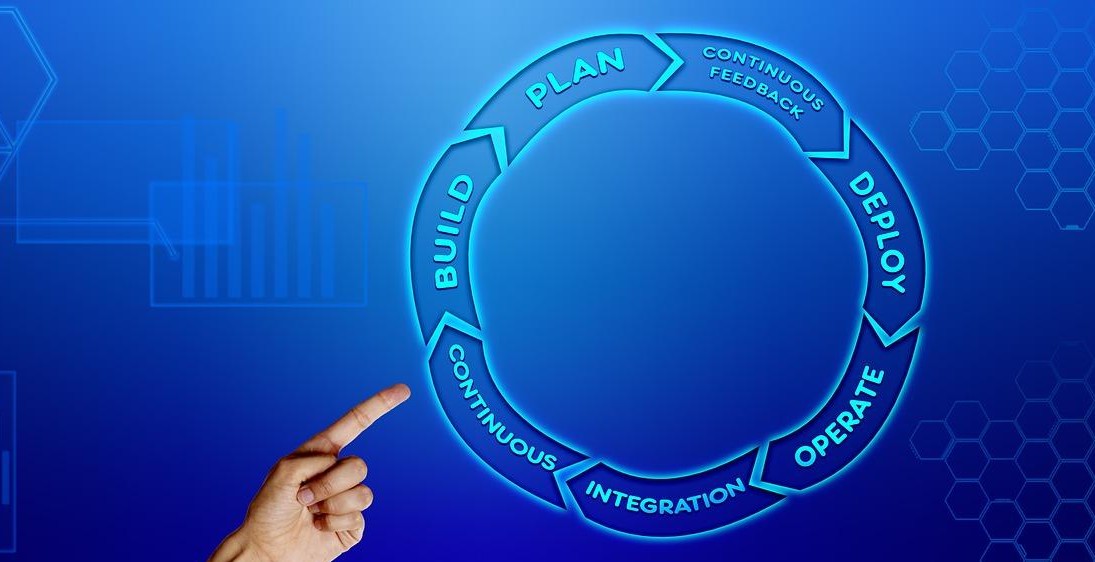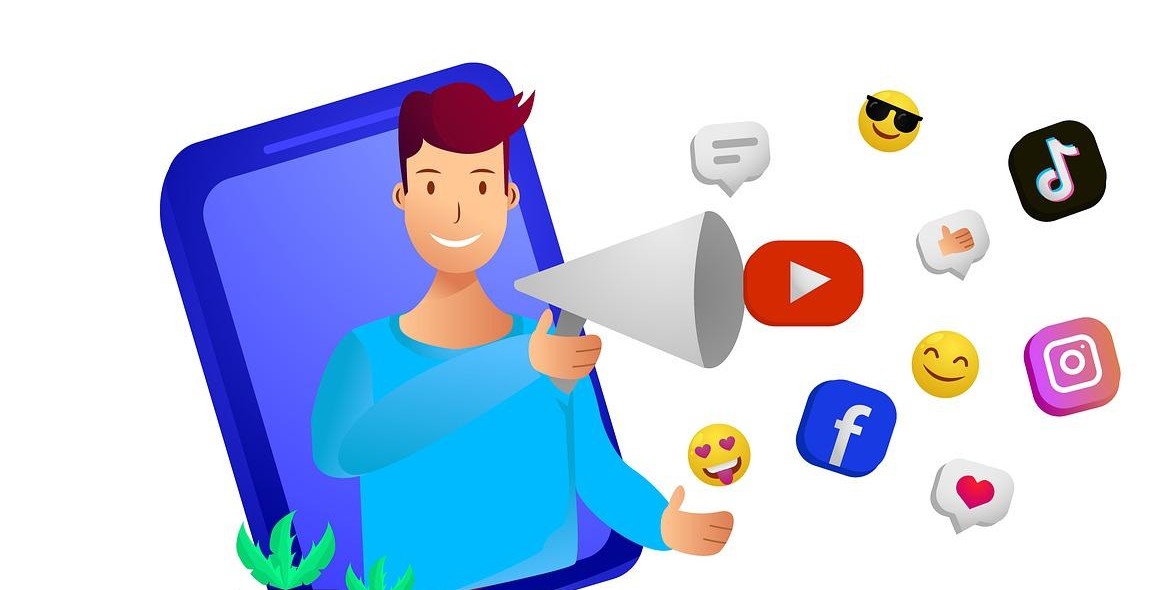Introduction
In today’s digital age, social media platforms have become an integral part of our lives. Millions of people around the world connect, share, and interact with each other through these platforms on a daily basis. However, with the increasing popularity of social media, there has been a rise in the use of social media bots.
Social media bots, also known as chatbots or simply bots, are automated software programs that are designed to perform specific tasks on social media platforms. These bots can mimic human behavior and interact with other users, post content, respond to messages, and even generate likes and comments. They can be programmed to follow specific instructions or operate autonomously using artificial intelligence algorithms.
While social media bots can serve various purposes, such as customer service, content promotion, or data collection, they have also raised concerns regarding their impact on social media platforms and users. Some bots are used for malicious activities, such as spreading misinformation, spamming, or manipulating public opinion.
This article aims to provide an in-depth understanding of social media bots, their functionalities, benefits, and potential drawbacks. We will explore different types of social media bots, their applications in various industries, and the ethical considerations surrounding their use. Additionally, we will discuss the importance of distinguishing between genuine human interactions and bot-generated activities on social media platforms.
By gaining insights into the world of social media bots, readers will be better equipped to navigate the digital landscape and make informed decisions regarding their online presence and interactions.
What are Social Media Bots?
Social media bots, also known as social bots or social media automation tools, are software programs designed to automate various tasks on social media platforms. These bots are programmed to perform actions such as posting, liking, commenting, following, and messaging on behalf of a user or a brand.
Types of Social Media Bots
There are several types of social media bots, each serving different purposes:
- Chatbots: These bots are designed to simulate human conversation and interact with users through messaging platforms.
- Content bots: These bots automatically generate and share content, such as articles, images, and videos, based on predefined criteria.
- Engagement bots: These bots are programmed to engage with other users by liking, commenting, and following their posts to increase visibility and reach.
- Monitoring bots: These bots monitor social media platforms for specific keywords, trends, or mentions and provide real-time updates.
Benefits of Social Media Bots
Social media bots offer several benefits to individuals and businesses:
- Automation: Bots save time and effort by automating repetitive tasks, allowing users to focus on more strategic activities.
- Increased reach: Bots can help increase the reach and visibility of social media content by engaging with a larger audience.
- Improved customer service: Chatbots can provide instant responses to customer queries, improving customer service and satisfaction.
- Efficient content generation: Content bots can generate and share relevant content consistently, ensuring a steady flow of engaging posts.
- Data analysis: Bots can collect and analyze data from social media platforms, providing valuable insights for marketing and decision-making purposes.

How Do Social Media Bots Work?
Social media bots are computer programs that automate various tasks on social media platforms. These bots are designed to perform specific actions such as automation and scheduling, data collection and analysis, and engagement and interaction. Understanding how these bots work is crucial in today’s digital landscape.
Automation and Scheduling
Social media bots can automate repetitive tasks, such as posting content, liking, commenting, and following/unfollowing other users. These bots can be programmed to perform these actions at specific times or intervals, allowing businesses and individuals to maintain a consistent social media presence without manual intervention.
Data Collection and Analysis
Social media bots are also capable of collecting and analyzing vast amounts of data from social media platforms. They can scrape information such as user profiles, posts, comments, and hashtags, providing valuable insights for businesses. This data can be used to identify trends, monitor brand reputation, track competitors, and target specific demographics for marketing purposes.
Engagement and Interaction
Social media bots can engage with other users by liking, commenting, and following them. These interactions are often designed to appear human-like, creating the illusion of genuine engagement. Bots can also respond to direct messages and mentions, providing quick and automated customer support. However, it’s important to note that not all bot interactions are transparent, and some may be used for malicious purposes.
In conclusion, social media bots are powerful tools that can streamline social media management, collect valuable data, and enhance user engagement. However, it’s important to use them ethically and transparently to avoid potential pitfalls and maintain trust with users.
Examples of Social Media Bots
Social media bots are becoming increasingly common across various platforms, including Twitter, Instagram, and Facebook. These bots serve a variety of purposes, from automating tasks to engaging with users. Here are some examples of social media bots:
Twitter Bots
Twitter bots are widely used for various purposes, including content sharing, retweeting, and engaging with users. Some popular examples include:
- News bots: These bots automatically tweet news updates from reputable sources, keeping followers informed in real-time.
- Customer support bots: Many businesses use bots to respond to customer inquiries and provide assistance.
- Political bots: These bots are often used during elections to promote or criticize specific candidates or parties.
Instagram Bots
Instagram bots have gained popularity for automating tasks such as liking, commenting, and following/unfollowing. Some examples of Instagram bots include:
- Like bots: These bots automatically like posts based on specific hashtags or criteria, helping users gain visibility and engagement.
- Comment bots: Comment bots leave pre-set comments on posts, often used for promotional purposes.
- Follower bots: These bots follow and unfollow users based on certain criteria, aiming to increase follower count.
Facebook Bots
Facebook bots are used for various purposes, such as automating customer support and engaging with users. Some notable examples include:
- Messenger bots: These bots are integrated into Facebook Messenger and can provide automated responses to frequently asked questions.
- Chatbots: Businesses often use chatbots on their Facebook pages to interact with users, answer inquiries, and offer personalized recommendations.
- Content sharing bots: These bots automatically post content from external sources to Facebook pages, keeping followers updated.
These are just a few examples of social media bots, showcasing the wide range of functionalities they can offer across different platforms. It’s important to note that while bots can be beneficial, they should be used ethically and transparently to maintain trust and authenticity on social media.

The Impact of Social Media Bots
Positive Impact
Social media bots have revolutionized the way businesses and individuals interact on social platforms. Here are some of the positive impacts of social media bots:
- Improved Customer Service: Bots can provide real-time support, answer frequently asked questions, and handle customer inquiries efficiently, enhancing customer satisfaction.
- Automated Content Distribution: Bots can schedule and share content across multiple social media platforms, ensuring a consistent and timely presence, even when human resources are limited.
- Enhanced Engagement: Bots can engage with users by liking, commenting, and sharing content, helping to increase brand visibility and reach a broader audience.
- Efficient Lead Generation: Bots can collect and analyze user data, allowing businesses to identify potential leads and tailor their marketing strategies accordingly.
Negative Impact
While social media bots have their advantages, it is essential to consider the potential negative impacts they can have:
- Spread of Misinformation: Bots can be used to spread false information or propaganda, leading to the proliferation of fake news and undermining the trustworthiness of social media platforms.
- Manipulation of Trends: Bots can artificially inflate engagement metrics, such as likes and shares, influencing trending topics and distorting public opinion.
- User Privacy Concerns: Bots that collect user data raise privacy concerns, as personal information may be misused or shared with unauthorized parties.
- Loss of Authenticity: Excessive bot presence can lead to a loss of authenticity and genuine human interactions on social media, impacting user trust and engagement.
It is crucial for social media platforms, businesses, and users to strike a balance between utilizing the benefits of social media bots while mitigating the negative impacts they can have.
How to Identify Social Media Bots
As social media platforms continue to grow in popularity, so does the presence of social media bots. These automated accounts can be used for various purposes, including spreading misinformation, manipulating trends, or engaging in spamming activities. It is crucial to be able to identify these bots to maintain the authenticity and integrity of social media platforms. Here are three key indicators to help you spot social media bots:
1. Unnatural Activity
Social media bots often exhibit unnatural activity patterns that differ from those of real users. They may have an unusually high number of followers or follow a massive number of accounts themselves. Bots tend to engage in rapid and repetitive actions, such as liking, sharing, or commenting on posts in a short period. Additionally, they may post at odd hours or in quick succession, which is not typical behavior for human users.
2. Lack of Personalization
Social media bots often lack personalization in their interactions. They may use generic or irrelevant comments or messages that do not contribute to the conversation. Bots typically rely on pre-programmed responses or use templates, making their interactions appear robotic and impersonal. Additionally, they may not have a profile picture, a bio, or any personal information, further indicating their lack of authenticity.
3. Repetitive Content
Bots often generate repetitive content as they aim to spread their message or promote a specific agenda. They may post the same message or link across multiple accounts or use similar language and phrasing in their posts. This lack of originality and diversity in content suggests a bot’s involvement rather than that of a human user.
By keeping an eye out for these indicators, you can become more adept at identifying social media bots. It is essential to report any suspicious accounts to the platform administrators to help maintain a safe and genuine social media environment.
The Future of Social Media Bots
Social media bots have come a long way in recent years, thanks to advancements in AI and machine learning. These technologies have enabled bots to become more intelligent, interactive, and capable of understanding and responding to human interactions on social media platforms.
Advancements in AI and Machine Learning
As AI and machine learning continue to evolve, social media bots are becoming increasingly sophisticated. They can now analyze vast amounts of data, learn from user interactions, and adapt their responses to provide more personalized and relevant content. This is particularly valuable for businesses looking to engage with their audience and deliver targeted marketing messages.
Furthermore, with advancements in natural language processing, bots can now understand and interpret complex human language, including slang, emojis, and even sarcasm. This makes them more capable of engaging in meaningful conversations and providing accurate and helpful responses to user queries.
Regulation and Ethics
As social media bots become more prevalent, there is a growing need for regulation and ethical guidelines to ensure their responsible use. Governments and social media platforms are increasingly recognizing the potential risks associated with malicious bots, such as spreading misinformation or engaging in harmful activities.
Regulations may include requirements for bot developers to disclose their automated nature and limitations, as well as guidelines for ensuring transparency and accountability. Additionally, ethical considerations are crucial to prevent bots from invading users’ privacy, engaging in deceptive practices, or manipulating public opinion.
By striking the right balance between innovation and regulation, the future of social media bots holds great promise. With continued advancements in AI and machine learning, coupled with responsible governance, social media bots will play a significant role in enhancing user experiences and driving meaningful interactions on social platforms.
